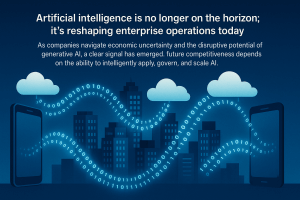Web Giant Targets the Cloud
Google has spent the last 14 years building one of the largest networks and most scalable architectures in the world. The Google Compute Engine (GCE) is a public cloud now generally available that brings Google’s architecture to the masses. While it is undeniable that Google has immense resources (having spent over $2.9B on infrastructure) and knowledge on architecture (Google File System inspired HDFS; Google now runs on Colossos), but it is an late entrant into a crowded cloud marketplace.
The leader in the market is Amazon – it is estimated that AWS could bring in $3B in revenue in 2013 – and there is concerted efforts from Rackspace and every telecom and infrastructure player (IBM, HP, etc.) to gain share in public cloud. In handicapping the horses on the track, Amazon is in the lead, Google is a strong favorite based on its pedigree, and there is a broad field that all wants a piece of the sizable world of cloud solutions.
What Google Brings to the Cloud
Google’s updates (see the Cloud Platform Blog announcement) were primarily focused on improvements that allow for flexible and inexpensive deployments:
- Sub-hour billing with a minimum of 10 minutes. While Amazon bills by the hour, there are alternatives (such as ProfitBricks) that offer this billing option.
- Shared core instances – small and micro instances are now available for low-intensity workloads.
- Persistent disk with support up to 10TB per volume; compared to Amazon andRackspace, which only support 1TB volumes.
What is most impressive from Google’s announcement is that during the last 12 months of beta, it rolled out 163 improvements. This rapid rate of development is needed if Google hopes to keep up with the new and improved functionality that Amazon AWS rolls out regularly. In comparison, OpenStack had to switch from 3 to 6 month release cycles, which could hamper its competitiveness. Google also has a broad portfolio that it can leverage, including App Engine (see the figure above for an example of how Google’s services can work together), which now supports PHP runtime. Google’s network is one of the largest in the world and has been leveraging SDN for two years. Networking bandwidth and locality are a critical attribute for cloud workloads; Google’s capabilities will allow it to compete with telcos (see this article about Switch in Las Vegas that also has a strong networking service).
What’s Next for GCE

Action Item: CIOs will already have Google as part of the IT discussion for mobile, collaboration, and other applications. With the current iteration of GCE, Google gets on the short list for test/dev and Web-scale applications, where cost is one of the primary attributes. Companies should look for maturation in Google’s SLA and expansion of a partner ecosystem as milestones for when GCE can be considered more broadly as a public cloud destination. In many ways, Amazon AWS sees Google as its primary competitor, as demonstrated by the pricing war being waged between them. The market is not a two horse race, but OpenStack proponents, Microsoft Azure, Rackspace, and others now must compete with two fast-moving Internet giants.



